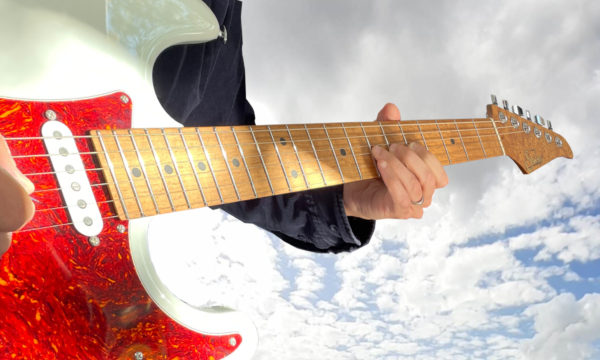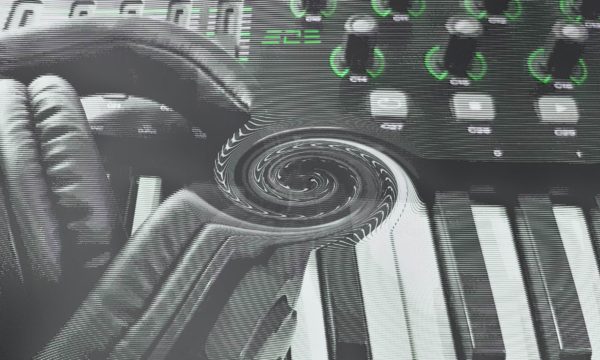About
ABOUT IF NOT IF – THE BAND
If Not If is the artist name of multi-instrumentalist and producer Graeme Ginsberg.
With foundations in classic and progressive rock, modal jazz and fusion, Ginsberg draws also on electronic indie, post-rock, experimental, post-punk, cinematic, tech house, new wave, P-Funk, folk, dub and world music to produce music that is at once as familiar as it is unusual. His approach to composition is that nothing should be out of bounds.
“I grew up with different kinds of music and I try to keep my mind as free of assumptions as possible when writing and arranging,” he says. “If I hear it in my head, I’ll try to find a way to create it.”
The name ‘If Not If’ sums up the contradictions, ambiguities and dualities Ginsberg likes to work across – complexity and simplicity, freedom and constraint, harmony and dissonance. Rules defined by their possibilities, possibilities defined by their rules.
ABOUT GRAEME GINSBERG
Growing up in London during the Seventies and Eighties, Ginsberg found he had easy access to music from different decades. As he started to find the mainstream more manufactured, he took a more eclectic approach.
“When I hit 12, I just got fanatical about album bands – Pink Floyd, Led Zeppelin, King Crimson, Frank Zappa, Yes, Steely Dan, Jimi Hendrix, The Doors, Deep Purple, Roxy Music, Jethro Tull, Traffic, Santana, The Stranglers, Talking Heads… and also singer-songwriters like Joni Mitchell, John Martyn, Crosby/Stills/Nash/Young, Roy Harper and Nick Drake. I switched from flute to guitar, and I had this great teacher who got me heavily into jazz and fusion: Al Di Meola, Larry Carlton, Allan Holdsworth, Charlie Christian, John Coltrane, Steve Morse, John McLaughlin, Frank Gambale, Scott Henderson, Steve Vai, Shawn Lane, Brand X… There was also a lot of change going on with indie music also at the time – I liked the upfront bass, open chords and otherworldly synths and vocals of bands like The Cure, Dead Can Dance and Cocteau Twins – and there were pioneering Afro-jazz bands like Malombo – just a totally different kind of movement. I used to spend hours in secondhand record stores leafing through vinyl, listening, checking out the liner notes – who was playing, producing, engineering.”
In his later teens and twenties, Ginsberg played his new pieces live in his quartets, trios and solo. He then started focusing more closely on composition and developing approaches so he could rationalise new influences like Living Colour, King’s X, Phish, Porcupine Tree, P-Funk and electronic music. He started writing up his chord sequences, guitar tabs and staves more formally in notebooks, and capturing ideas using a basic tape machine, with the hope that professional recording equipment might become more accessible one day.
With the recent leaps in sound recording and production technology, he is now making up for lost time.
“Rules defined by their possibilities,
possibilities defined by their rules.”


About If Not If – the music
Ginsberg’s music is vivid, exciting and moving. There are no rules when it comes to scope.
“If Not If is like a collective of musicians I can call up, the number of players just depending on what the piece calls for. The two EPs – “Sunshine Everywhere” and “Forgiveness” – are very big, complex arrangements, layering instruments across 250 tracks. But there are other pieces on upcoming album Structure that are like a trio or quartet just set up in the studio and did a couple of live takes.”


When it comes to guitar, Ginsberg’s playing style is distinctive and personal, taking clearly defined melodies through unexpected tensions and angular outbursts – wild bends, intense vibrato, fragmented chords, percussive hammer-ons / pull-offs, and quick movement from soft to hard attack are recurring features in his playing. He cites Jeff Beck, David Gilmour, Frank Zappa, Robert Fripp, Adrian Belew, Pat Metheny, John Scofield and Carl Verheyen as having had the biggest impact on his approach.
Meanwhile, as a synth sound developer and designer, Ginsberg is constantly searching for emotive and thought-provoking tones and textures. He likes to use both keyboard and MIDI guitar when playing synths to achieve the widest range of dynamics.
“It’s the best of both worlds. Guitar has always been my primary instrument, and using a MIDI setup allows me to transfer those techniques, to create wild synth lines and textures that are totally different to a keyboard. Meanwhile, keyboards allow stacked chords, subtle pressure variations and intervals that just aren’t possible with a guitar.”
Although methodical and precise when it comes to arrangement and production, he prefers to develop and capture instrumental parts through series of improvisation.
“I’ve never liked rehearsals – for anything! – and when it comes to music, I find that playing live in the moment encourages unexpected ideas, and more emotion, energy and urgency. At the same time, I want to make sure the direction and context of the whole piece remain clear – and I think this requires a precise overall architecture. So, there’s freedom and there’s discipline, preparation and spontaneity. My way of working is: Structure, Experiment, Improvise / Record, Edit; then Edit, Improvise / Record, Experiment, Structure; and Repeat; and Repeat; until it all sounds complete.”
Ginsberg has a very busy production schedule set for If Not If, including an album releasing in February 2023.
“The tracks I’m currently completing for the album bring the guitars up front. But it’s always the same approach – striving to get to something vivid, dynamic and emotional using the right balance of sounds.”
